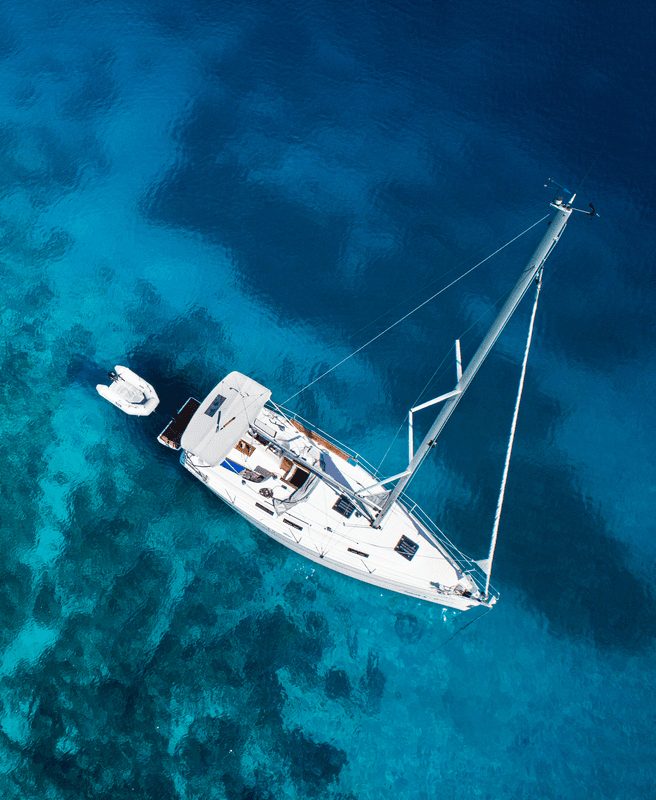My Experience Opening a Bank Account in Ukraine
October 18, 2022
Dateline: Kiev, Ukraine
The giant wall mural behind me was rather ironic: “Freedom is our Religion!”
Just across the street from Kiev’s Maidan Square – the site of numerous political uprisings since the fall of the Soviet Union – was the first Ukrainian bank I visited on my trip to Kiev.
This visit wasn’t because I believe that Ukraine offers an “up and coming” offshore banking opportunity; I don’t.
In fact, I have been lambasting the low quality of Ukrainian banks so much in the last several years – roughly since Euromaidan, in fact – that banking in Ukraine has been a sort of codeword among our loyal readers for “stuff not to do”.
Problems with Ukrainian Banks
Ukraine has a long history of banks run by mobsters and other shady characters. While every country has its share of bank disasters, including the United States, Ukraine was among the worst on earth, and quite possibly the worst in Europe.
Then, as recently as late 2016, Ukraine’s government moved to rescue the country’s largest bank, PrivatBank.
PrivatBank’s nationalization was largely funded by international interests interested in propping up Ukraine’s already failing economy, but the story behind the bank’s collapse raised eyebrows. Specifically, the largest bank in the country was owned by a shady tycoon whose companies and friends were the beneficiaries of 97% of his bank’s corporate loans.
More than one-third of all Ukrainian deposits were held in PrivatBank, and yet it was left to crumble and require a multi-billion dollar bailout from the government and other international agencies.
It’s safe to say that, while Eastern Europe is a hidden gem in many ways, Ukraine is the antithesis of a good place to plant a banking flag. Despite once-sky high interest rates (think up to 20%) on simple term deposits, Ukraine’s banking system is a mess.
So what did I do on a week-long trip to Kiev? Open a bank account, of course.
It’s not that I plan to keep any part of my wealth in a Ukrainian bank. Quite the opposite, in fact; my deposit amounts to the cost of a halfway decent dinner.
Simply put, mastering the offshore world one country at a time is my muse. Some people collect stamps. Some people play guitar. I open foreign bank accounts and seek second residencies.
And I couldn’t resist the chance to open a bank account in perhaps the worst place to do so.
There is only one reason why any normal person seeking international diversification and a safe place for their money would consider Ukraine as a place to deposit money…

High Interest Rates in Ukraine Banks
For years, Ukraine’s banks lured depositors scared of the collapsing hryvnia with interest rates up to 20% and 21%. Generally, international banks paid a few percentage points lower, likely knowing that anyone who actually wanted return OF their capital wouldn’t want some oligarch loaning their money out to his friends.
There is no real deposit insurance here in Ukraine. In fact, it’s always amusing when westerners send me questions about “how safe is it to bank in Ukraine or this-country-or-that-country?” and mentioning things like the FDIC. Obviously, that doesn’t exist here.
Even when the government bailed out two of the largest banks recently, it was only up to about $8,000 in deposits. Again, this is not a banking destination unless you plan to live here and want to save a few bucks on ATM fees.
Even today, though, interest rates in Ukraine are high. Prominvestbank is offering a 16.75% one-year term deposit (or certificate of deposit) denominated in UAH. Ukrotsbank, owned by Italy’s Unicredit, is offering the same. International banks are offering less, but still in double digits.
Those interest rates are similar to those offered by similarly insular Mongolian banks, but higher than those in neighboring, safer countries.
If you want to deposit US dollars, euros, Swiss francs, or rubles, you can, but be prepared for the same low rates you’ll find everywhere else. Neighboring countries may offer better terms on stable currencies.
How to Open a Bank Account in Ukraine
It was not interest rates, but rather my geeky search for mastery, that brought me to Galereya Bytiva, a shopping and cafe district across from Maidan Square. It is here that the aforementioned mural touting “freedom” dominates the square as a reminder of the political opposition to the past administration’s policies.
This area is home to a number of Ukraine’s largest banks, namely international banks like Russia’s Sberbank and VTB, Hungary’s OTP, Austria’s Raiffeisen, and Germany’s ProCredit Bank.
However, somebody forgot to share the neighboring mural’s pro-freedom message with the Ukraine National Bank, because opening an account here can be hard.
It is not because remote account opening is impossible, as it is in almost every onshore jursdiction these days. It’s that the banks, and the banking system itself, are a bit of a mess.
According to Ukraine’s central bank, there are 25 Ukrainian banks that hold at least $200 million in assets.
PrivatBank still tops the list as ironic proof that, even after a bail-out, most humans don’t change their habits, figuring not only “it can’t happen here”, but perhaps that “it can’t happen again”.
Raiffeisen is the fourth largest bank in Ukraine with one-fifth the assets of PrivatBank, while the other international banks surprisingly ranked far lower. For a country where locals were dumping the local hryvnia currency at all costs, the idea of storing money in a local bank – owned by either some dude named Viktor, or the Russian government – seemed odd.
My first bank visit was to OTP Bank. There was no particular reason for this other than than their logo was the most appealing to me. When discussing deposits of $200, I figured I didn’t need a ton of due diligence between an appealing font.
In fact, while I imagine that OTP itself is rather solvent, I was almost hoping to run into some future problem having my money gobbled up by a mobster. It would make for a fun update for this article.
Anyway, I walked into the OTP Bank branch, used my marginal Russian to locate a banker who spoke passable English, and asked to open an account.
Almost immediately, the banker – a ruddy-looking young man – started bringing up problems. I aced the first question “are you a resident of Ukraine or not?”, but soon found out that either answer would have been satisfactory.
Then the problems started. The banker immediately dove into the “banker spiel”, which includes quick and frequent references to the central bank and their policies and how their hands are tied.
This is a good indicator of how good a bank, and by extension, a country are to work with. When people you want to invest money with make excuses from “hello”, that is often the first sign that you are in a country that is not interested in investment and may not be a good place to invest.
The banker explained to me that any non-resident of Ukraine was required to produce documentation proving the origin of the funds. Apparently mobsters can launder billions through Ukraine’s banks with ease, but an American tourist can’t toss $100 in a checking account without doing a circus act first.
“What if I just deposit $100?”, I asked, knowing that there are likely millions of accounts in Ukraine’s banks with less on deposit than that now.
“It’s the same requirement”, the banker replied to me. “Even $1, you must show proof”. Then more excuses about how this is the central bank’s regulation, we’re just following rules, blah blah blah.
Fortunately, I’ve seen this before. I know from years of experience that bankers have a unique talent for turning otherwise simple requirements into what sounds like Herculean tasks.
I have actually trained my staff on how to “speak banker”, and when to demand that the requirements in bank-speak are dumbed down into everyday language.
For example, ask any bank what you will need to open an account and they may specify that “the account holder must furnish an identity document”, even though it would be a lot easier to say “bring your passport”.
After five minutes of going in circles and discussing the different types of accounts I could, we settled on a far simpler process: I could withdraw money from the ATM using my existing debit card and provide the “check” (known to us as the “receipt”) to “prove” the source of my funds.
How this stops would-be terrorists from funding bank accounts in Ukraine I don’t know, although I suppose the central bank assumes in typical Eastern Europe fashion that if some other bank already accepted the funds then “eet ees naught their probbblem”.
By this point, I had actually warmed up to my new banker friend, who told me that I had two options:
One, to open a one-year term deposit earning a fixed 12% interest with a minimum deposit of 2,000 UAH (about $79),
or two, to open a savings account earning a variable 10% interest with a minimum deposit of 100 UAH (about $4).
Any account would involve a commission of 80 UAH to open, although I seemed unclear if this commission was for obtaining a debit card or just as an account opening fee, and didn’t press further as my policy is not to bother over bank fees that are comparable to an order of McNuggets.
Now that the thorny regulatory issues had been out of the way, the banker opened up and was curious: why did I want to open an account in Ukraine?
I explained that I was a collector of bank accounts, which seemed odd to him. At one point, I think I said “for fun”, and then attempted to play it cool as I followed up with “you don’t care, right?”
Much as I was tempted to, I didn’t want to tell him that opening the account was as a joke to avoid repeating that scene in Seinfeld where a subway passenger shouts as Kramer, “you think Ukraine is game?!”
After fifteen minutes, I had finally made some headway and found a way to prove the source of my funds without having to get a bank reference letter or show documents from the last business I sold in 2013.
I had decided on the savings account, merely because – much as I was secretly hoping for some problem as mentioned before – I know that banks in countries like Ukraine force you to come to a branch in order to close your term deposit at the end.
Not wanting to base my travel plans around collecting $80, I was willing to sacrifice 2% in interest for the flexibility of a traditional savings account that paid interest monthly.
Now, I was ready to get started… only I realized I had forgotten my passport at the hotel and would need to return.
Upon returning to my room at the Fairmont, I decided to try my luck at other banks. Again, all in the interest of “fun”.
To my surprise, most of the international banks had someone that spoke English. The service wasn’t even all that bad in most cases. Each bank had its own roadblocks with varying degrees of flexibility.
I visited Sberbank, KredoBank, Oschadbank, Ukreximbank, and Credit Agricole branches around Kiev. I also attempted to visit branches of German ProCredit Bank and FinBank, both of which looked like they were evicted and had boarded up entrances at city center locations.
Generally, I found the international banks to have better English, but weren’t any more helpful.
KredoBank, a Polish bank, gave me a front row seat to a fifteen-minute exercise in a cat chasing its tail, explaining at one point that foreigners can not open accounts, but then saying I could if the money was sent from within Ukraine, and finally saying that I could send the money from overseas if I could show proof of funds.
Oschadbank barely spoke any English, but repeated the same circular logic that made it sound as if getting a “declaration” was like landing a man on the moon.
At Sberbank, I waited for the receptionist to find an English speaker for fifteen minutes before the burly security guard go so close to me and seemed so frustrated by my lack of Ukrainian skills that I slipped out due to a low-level fear of my safety.
Basically, while it was possible to open an account at any of these banks, most made it sound impossible. Perhaps they are doing the world a favor. I eventually returned to OTP where, upon completing most of the paperwork, realized “this is too much hassle for the reward” and left.
An Overview of Banking in Ukraine
Overall, my experience banking in Ukraine was marginally better than expected, with more English-speaking and pleasant service than I would have expected. Whether my beginner’s Russian opened any doors, I can not be sure.
I would still not recommend banking in Ukraine. Again, this was an experiment for my own entertainment, and to share with you the Nomad Capitalist reader. As they say, don’t try this at home.
Ukraine is no banking paradise, but one lesson I am reminded of is how difficult banks will try to make opening an account for the uninitiated. While there are some banks who will absolutely not accept foreigners, and others that will never accept US persons, with many banks the bark is worse than the bite.
There are many onshore and offshore banks around the world that will work with you if only you know how to deal with them, how to answer their questions, and when to be persistent.


How to Get UAE Citizenship – The Complete Guide
Sovereignty – both national and personal – shapes ambition, secures wealth, and defines status in a shifting global order. For the high-achieving global citizen, acquiring a second or even third passport is more than a lifestyle upgrade; it’s a strategic move in long-term financial and geopolitical positioning. But not all citizenships are created equal – […]
Read more

A Gateway to Central Asia: New Kazakhstan Golden Visa Program for 2025
Central Asia just raised the stakes in the golden visa game. In May 2025, Kazakhstan officially launched a 10-year Golden Visa program in an ambitious move to position the country as a serious contender in the global investor migration space. At a time when other international regions are rolling back their citizenship and residency options, […]
Read more

Top Countries Offering Golden Visas in 2025
Residency is no longer about lifestyle – it’s about leverage In an increasingly unpredictable world, Golden Visas offer something most governments can’t: certainty in exchange for capital. They are more than migration tools; they are strategic safeguards offering residence rights, future citizenship, global mobility, and access to tax-friendly jurisdictions. For investors, entrepreneurs and globally minded […]
Read more




